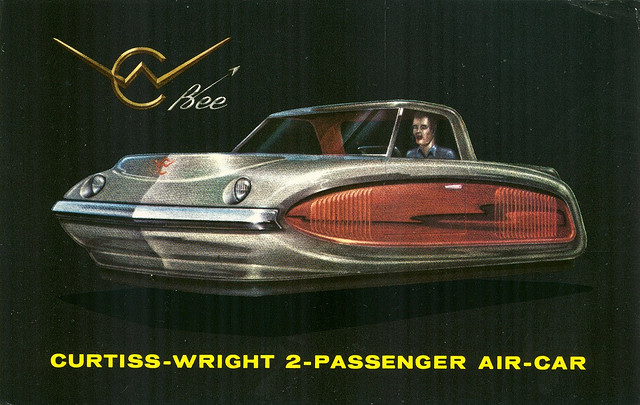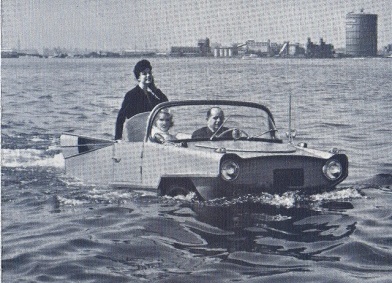It looks as if the driverless car may not only be feasible, but become a reality in the near future. As insurers consider how to assess liability to a vehicle with no one behind the wheel, here are five failed car technologies that never caught on, from insurancehunter.ca.
 1. The Nuclear-Powered Car
1. The Nuclear-Powered Car
Yes, in the late 1950’s Ford thought it would be a good idea to build a car, named the Nucleon, which ran using a small nuclear reactor. Can’t imagine what could go wrong here?
 2. Hover Cars
2. Hover Cars
Remember when hover cars were thought to be to future of cars? Was it the 35 mile per hour limit, the extremely terrible fuel mileage, or the fact that the car had no brakes that led to its demise? Well, at least these cars worked out for The Jetsons! (continued)
#pb#
 3. Amphibious Cars
3. Amphibious Cars
A cool idea in theory, it just didn’t seem to work out in practice. Perhaps one of the main issues with adoption is that no everyone lives close to water. And really, how often would you take the family out for a drive on the lake?
 4. Fifth Wheel Parking
4. Fifth Wheel Parking
With big cars being popular in the 1950s and parking becoming an issue, Cadillac introduced fifth wheel parking – that’s right – your spare tire would be lowered to the ground, elevate your car and allows you to swing the rear of your vehicle into the clear. You can see the car in action by clicking
here.
.jpg) 5. Automatic Seatbelts
5. Automatic Seatbelts
Originally introduced in the late 1970s but also gained popularity in the early 1990s, this invention is deemed one of the worst car technologies by many. In what was supposed to be a convenient feature turned into a strangling threat in some instances. Many people also did not use them correctly and failed to use the manual lap belt, also making it a safety issue. Click
here to see the seatbelts in operation.
However, the technology for the driverless car has already been embraced by Google and at least one major auto manufacturer. Cisco's technology trend watchers estimate that in five to seven years, it'll cost us more to drive our cars than to let them drive us.
“Considering that not only Google, but also automakers, such as Nissan, Audi and Toyota, are intensifying their efforts to develop advanced autonomous-driving technology, it's safe to say that driverless cars could go mainstream in about 10 to 15 years,” says Jordan Perch, an analyst and writer for DMV.com. “Google is confident that it will be able to launch a self-driving car by 2025, and Nissan is even more optimistic, saying that it will bring an autonomous car to the market by 2020.”
The cost of having human beings behind the wheel is a costly one. According to distracted driving statistics from the CAA, 80 per cent of collisions and 65 per cent of near crashes were due to inattentive drivers.





.jpg)
